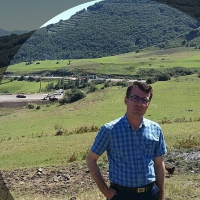GIS-based Determining the Landslide hotspot Occurrence using Getis-Ord Index in Gharnaveh Watershed, Golestan Province
Landslide, as an important natural hazards, causes damage to infrastructure and leads to economic, social and human losses. In this regard, determining the critical zones of landslides occurrence can be used in planning for damage reduction. The aim of the current research is analyzing and identifying landslide hot spots using Getis-Ord algorithm in Gharnaveh watershed, Golestan province. Therefore, the frequency and characteristics of landslides has been analyzed in different classes of slope, aspect, soil and land uses. The area, length, width, depth and height of the precipice of landslide features have been considered as the basis in hot spot analysis. The results showed that the landslide hot spots are located in the eastern part of the study area, which includes high altitude classes, rangelands and moderate slopes. Results showed that the rangeland and forest land uses, loess soils and 50-75% slope class and the northern aspect had the highest number of landslides. Also, the non-significant landslide points using the Getis-Ord method and considering landslide area criterion located in the middle and downstream of Gharnaveh watershed. Determining the landslide hotspots and affecting factors through the spatial analysis in GIS provides the defining thresholds in the landslide’s occurrence. The analysis of the landslide hotspots can be a basis for spatial planning, and risk reduction. The implemented approach can be used in the evaluation of the spatial autocorrelation of natural hazards, and in combination with the areas prone to multiple environmental hazards can predict the risk and severity of damages in the future.
-
Analysing the Quality Karaj City Green Spaces using Remote Sensing Ecological Index (RSEI)
Nazanin Naseri, Milad Hosseinzadeh Niri, *
Journal of Geography and Environmental Studies, Spring 2025 -
Determining the dynamics of land use changes in a long-term time span in Erzurum, Turkey
Nazila Alaei, Memet Salih Bayraktutan *,
Anthropogenic Pollution Journal, Summer and Autumn 2024 -
GIS-based Spatial Runoff Coefficient Mapping in Mohammadabad Katul watershed, Golestan Province
*, Amirhosein Ghorbani,
Journal of Environmental Science Studies, -
Determining Hydrological Drought Characteristics Using Severity-Duration-Frequency Curves and Flow Thresholds Levels in Ardabil Province Rivers
Hamed Amini, Abazar Esmaliouri, *, Mearaj Sharari,
Journal of Water and Soil Resources Conservation,




